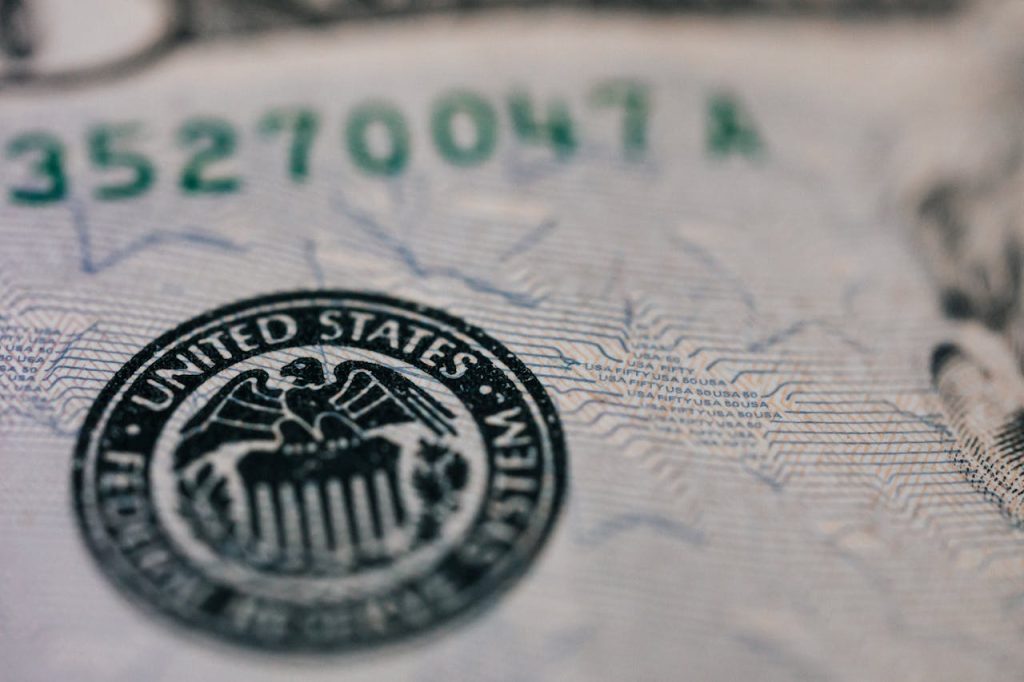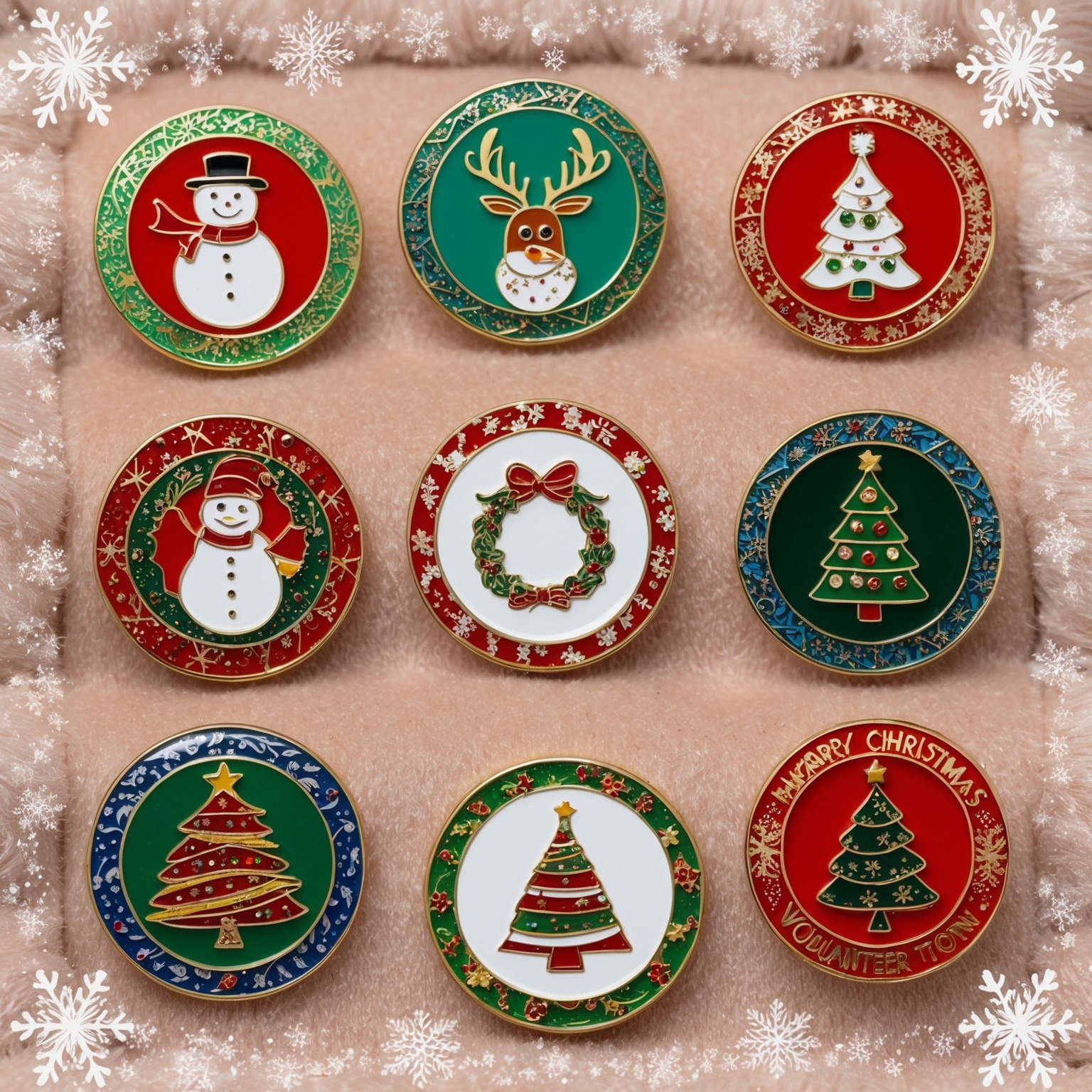In government roles, recognizing the dedication and hard work of public servants is essential for fostering morale, loyalty, and a sense of pride among employees. Among the various forms of recognition, lapel pins stand out as a timeless and meaningful way to celebrate service and excellence. These small but powerful symbols of achievement are worn with pride by individuals across all levels of government, from local municipalities to federal agencies.
Lapel pins are not only a badge of honor but also a tangible reminder of an individual’s contributions to public service. They serve as a visual representation of an employee’s commitment, dedication, and the milestones they have achieved throughout their careers. In this article, we will explore how lapel pins celebrate service in government roles, the significance they hold for recipients, and how they contribute to a culture of excellence within government organizations. We will also discuss the design considerations for creating meaningful lapel pins and how these pins can be effectively presented and displayed.
1. The Importance of Recognizing Service in Government Roles
Fostering a Culture of Excellence
Government roles are often demanding, requiring employees to navigate complex challenges, work long hours, and make decisions that impact the public. In such an environment, recognizing the efforts and achievements of public servants is crucial for fostering a culture of excellence. When employees feel valued and appreciated, they are more likely to remain motivated, committed, and engaged in their work.
Lapel pins play a vital role in recognizing excellence by serving as a public acknowledgment of an individual’s contributions. Whether awarded for years of service, outstanding performance, or participation in a significant project, lapel pins symbolize the appreciation and respect that the organization has for its employees. This recognition not only boosts morale but also encourages employees to continue striving for excellence in their roles.
Building Employee Loyalty and Retention
In any organization, employee retention is a key factor in maintaining continuity, expertise, and institutional knowledge. In government roles, where the work often involves specialized skills and deep understanding of policies and procedures, retaining experienced employees is especially important. Recognition programs that include lapel pins can play a significant role in building employee loyalty and reducing turnover.
When employees receive recognition for their service, they feel a stronger connection to their organization and a greater sense of belonging. Lapel pins serve as a tangible reminder of the organization’s appreciation, reinforcing the employee’s commitment to their role. This sense of loyalty can lead to higher job satisfaction, longer tenure, and a reduced likelihood of employees seeking opportunities elsewhere.
Enhancing Public Perception of Government Agencies
The public’s perception of government agencies is influenced by many factors, including the professionalism, dedication, and integrity of the employees who serve in these roles. When government employees are recognized for their service and achievements, it reflects positively on the entire organization and enhances public trust.
Lapel pins, worn on uniforms or professional attire, serve as visible symbols of an employee’s commitment to public service. When members of the public see these pins, they are reminded of the dedication and excellence of the individuals who work to serve their community. This positive perception can strengthen the relationship between government agencies and the citizens they serve, contributing to a more effective and trusted public sector.
2. The Role of Lapel Pins in Government Recognition Programs
Celebrating Years of Service
One of the most common uses of lapel pins in government recognition programs is to celebrate years of service. These pins are typically awarded at key milestones, such as 5, 10, 15, 20, or 25 years of service, and serve as a formal acknowledgment of an employee’s long-term commitment to their role.
Years of service lapel pins are often designed with symbols or numbers that represent the length of service. For example, a pin awarded for 10 years of service might feature the number “10” surrounded by laurel leaves, stars, or other symbols of achievement. The design of these pins can vary depending on the organization, but the underlying message is the same: a recognition of the employee’s dedication and loyalty over the years.
These pins are often presented during formal ceremonies, such as annual recognition events or department meetings. The act of receiving a service pin in front of colleagues and leadership adds to the significance of the award, making it a moment of pride for the recipient.
Acknowledging Outstanding Performance and Achievements
In addition to recognizing years of service, lapel pins are also used to acknowledge outstanding performance and specific achievements. These pins can be awarded for a variety of reasons, such as:
- Exceptional Performance: Pins awarded for consistently high performance or going above and beyond in one’s role. These pins may be given as part of an employee of the month or employee of the year program.
- Project Completion: Pins awarded for successful completion of major projects, initiatives, or programs that have a significant impact on the organization or the community.
- Innovative Contributions: Pins awarded for introducing innovative ideas, processes, or solutions that improve efficiency, save resources, or enhance the quality of services provided.
- Leadership and Mentorship: Pins awarded to individuals who have demonstrated exceptional leadership, mentoring others, and contributing to the development of their team or department.
These types of lapel pins often feature symbols or imagery that represent the specific achievement or area of excellence. For example, a pin awarded for innovation might include a lightbulb or gear symbol, while a leadership pin might feature a star or eagle. The personalized design of these pins makes them meaningful and relevant to the recipient’s accomplishments.
Recognizing Participation in Special Events and Programs
Lapel pins are also commonly used to recognize participation in special events, programs, or initiatives within government agencies. These pins serve as mementos of the employee’s involvement and contribution to the success of the event.
Examples of events or programs where lapel pins might be awarded include:
- Training and Development Programs: Employees who complete specialized training or professional development programs may receive a lapel pin to mark their achievement. These pins can serve as a reminder of the skills and knowledge they have gained.
- Community Outreach Initiatives: Employees who participate in community outreach programs, volunteer activities, or public service events may receive a lapel pin to acknowledge their efforts in serving the community.
- Anniversary Celebrations: Government agencies celebrating significant anniversaries (e.g., 50th, 100th) may distribute commemorative lapel pins to employees as part of the celebration. These pins often feature the anniversary date and the agency’s emblem or logo.
- Special Task Forces or Committees: Employees who serve on special task forces, committees, or working groups may receive lapel pins to recognize their contributions to these important efforts.
These pins are often designed with event-specific imagery or logos, making them unique keepsakes that commemorate the employee’s participation and contribution.
Honoring Retirements and Lifetime Achievements
Retirement is a significant milestone in any career, and lapel pins are a fitting way to honor an employee’s lifetime achievements and contributions to government service. Retirement pins are often more elaborate or distinctive in design, reflecting the importance of the occasion.
Retirement lapel pins may include symbols that represent the employee’s entire career, such as:
- Years of Service: The number of years the employee has served may be prominently displayed on the pin, often accompanied by symbols of longevity or dedication.
- Agency Emblem: The emblem or logo of the agency where the employee spent their career is often featured on the retirement pin, serving as a lasting reminder of their service.
- Personalized Elements: Some retirement pins are personalized with the employee’s name, job title, or a specific achievement that defined their career.
These pins are typically presented during retirement ceremonies, where the employee’s colleagues, supervisors, and family members can celebrate their accomplishments and contributions. The pin serves as a cherished keepsake that the retiree can wear or display as a reminder of their legacy in public service.
3. Designing Meaningful Lapel Pins for Government Roles
Symbolism and Imagery
The design of lapel pins for government roles should be thoughtful and meaningful, incorporating symbols and imagery that resonate with the values and mission of the organization. Common symbols used in government lapel pins include:
- Eagles: Often used to represent strength, leadership, and vigilance. Eagles are a common symbol in pins for leadership roles or national-level achievements.
- Stars: Symbolizing excellence, achievement, and recognition. Stars are frequently used in pins awarded for outstanding performance or leadership.
- Laurel Wreaths: Representing honor, achievement, and victory. Laurel wreaths are often used in service pins or retirement pins to signify the employee’s accomplishments.
- Government Emblems: Many lapel pins feature the emblem or logo of the government agency, such as a seal, coat of arms, or flag. These symbols reinforce the connection between the employee and the organization.
- Scales of Justice: Often used in pins for legal or judicial roles, the scales of justice represent fairness, integrity, and the rule of law.
- Flames or Torches: Symbolizing enlightenment, knowledge, and guidance. Flames or torches are often used in pins awarded for training, education, or mentoring.
The choice of symbols and imagery should align with the purpose of the pin and the message the organization wishes to convey. A well-designed pin with meaningful symbols can have a lasting impact on the recipient, serving as a powerful reminder of their achievements and the values they uphold.
Color and Finish
Color plays an important role in the design of lapel pins, with each color carrying its own symbolic meaning. Some common color associations in lapel pins include:
- Blue: Often associated with loyalty, trust, and integrity. Blue is a common color in government lapel pins, especially those awarded for service or leadership.
- Gold: Symbolizing honor, excellence, and achievement. Gold is often used in pins for high-ranking officials, retirees, or recipients of prestigious awards.
- Silver: Representing stability, professionalism, and distinction. Silver is commonly used in pins awarded for performance, innovation, or specific achievements.
- Red: Symbolizing courage, determination, and passion. Red is sometimes used in pins awarded for bravery, emergency response, or significant contributions.
- Green: Representing growth, renewal, and environmental stewardship. Green may be used in pins awarded for sustainability efforts or community outreach.
The finish of the pin, whether it be polished, matte, antique, or enamel, also contributes to its overall appearance and perceived value. For example, a polished gold finish may be used for a retirement pin to signify the high honor of the occasion, while an antique silver finish might be chosen for a service pin to convey a sense of tradition and longevity.
Personalization and Customization
Personalization adds a special touch to lapel pins, making them more meaningful to the recipient. Personalized elements may include:
- Name or Initials: Adding the recipient’s name or initials to the pin makes it a unique and personal keepsake.
- Job Title or Rank: Including the recipient’s job title or rank on the pin highlights their role within the organization and their contributions.
- Specific Dates: Incorporating specific dates, such as the date of service or the date of retirement, adds historical significance to the pin.
- Custom Imagery: Custom imagery that reflects the recipient’s specific achievements, department, or area of expertise can make the pin more relevant and meaningful.
Customization options allow organizations to create lapel pins that are tailored to the individual or the specific occasion. Whether it’s a pin for a special event, a milestone achievement, or a lifetime of service, personalized lapel pins make the recognition more memorable and impactful.
Craftsmanship and Quality
The craftsmanship and quality of lapel pins are essential factors in ensuring that they are valued and cherished by the recipients. High-quality materials, precise detailing, and durable construction all contribute to the overall excellence of the pin.
- Material Choice: Common materials for lapel pins include brass, copper, and zinc alloy. The choice of material should reflect the significance of the pin and the organization’s commitment to quality.
- Enamel Detailing: Enamel pins are known for their vibrant colors and smooth finish. Hard enamel (cloisonné) and soft enamel are popular options, with hard enamel offering a more durable and polished appearance.
- 3D Elements: Adding 3D elements, such as raised or recessed areas, gives the pin depth and dimension, making it more visually striking.
- Attachment Options: The attachment method, whether it be a butterfly clutch, magnetic back, or screwback, should be chosen for ease of use and security. The attachment should ensure that the pin stays securely in place when worn.
By investing in high-quality lapel pins, government organizations demonstrate their respect and appreciation for their employees’ service and achievements. A well-crafted pin not only looks impressive but also stands the test of time, becoming a cherished keepsake for the recipient.
4. Presenting and Displaying Lapel Pins in Government Settings
Formal Presentation Ceremonies
The presentation of lapel pins is an important aspect of recognition programs, and formal ceremonies add to the significance of the award. These ceremonies provide an opportunity for colleagues, supervisors, and leadership to publicly acknowledge the recipient’s achievements and contributions.
- Ceremony Planning: The presentation ceremony should be carefully planned, with attention to detail. This includes selecting a suitable venue, inviting key personnel, and preparing a speech or remarks that highlight the recipient’s accomplishments.
- Pin Presentation: The lapel pin is typically presented by a senior official or supervisor, who may pin it directly onto the recipient’s uniform or clothing. This moment is often accompanied by applause and words of appreciation.
- Certificates and Awards: In addition to the lapel pin, recipients may also receive a certificate, plaque, or other award that further recognizes their achievements. The combination of a lapel pin and a formal certificate enhances the overall impact of the recognition.
- Photography and Media: Capturing the moment with photographs or video adds to the significance of the presentation. These images can be shared within the organization or used in newsletters, websites, or social media to highlight the achievements of the employees.
Everyday Wear and Display
Once awarded, lapel pins can be worn by employees as part of their everyday attire, whether on their uniform, suit lapel, or professional clothing. Wearing the pin serves as a daily reminder of the recognition and the values it represents.
- Uniform Integration: For government roles that require uniforms, lapel pins can be integrated into the uniform design, such as being worn on the lapel, collar, or above the name badge. This ensures that the pin is visible and adds to the professional appearance of the uniform.
- Professional Attire: Employees who do not wear uniforms can still proudly display their lapel pins on their professional attire, such as jackets, blazers, or ties. The pin serves as a subtle but powerful symbol of their service and achievements.
- Multiple Pins: Employees who have received multiple lapel pins over the course of their career may choose to wear them all at once or rotate them depending on the occasion. Some may choose to wear their most recent or significant pin, while others may display a collection of pins on a pinboard or in a shadow box in their office.
Display Cases and Shadow Boxes
For employees who prefer to keep their lapel pins as keepsakes, display cases and shadow boxes offer a way to showcase their collection in a visually appealing manner. These displays can be placed in an office, at home, or in a public space within the organization.
- Shadow Boxes: Shadow boxes allow employees to create a custom display that includes not only their lapel pins but also other memorabilia, such as certificates, photographs, or medals. The depth of the shadow box adds dimension to the display and protects the items from dust and damage.
- Display Cases: Glass-fronted display cases provide a secure and professional way to showcase lapel pins. These cases can be wall-mounted or placed on a desk or shelf, allowing employees to display their pins in a prominent location.
- Pinboards: Pinboards offer a simple and versatile way to display lapel pins, allowing for easy rearrangement and customization. Pinboards can be framed for a polished look or used as part of a larger display that includes other awards and recognitions.
Passing Down Lapel Pins as Heirlooms
For some government employees, lapel pins hold deep personal significance and may be passed down as heirlooms to future generations. These pins become part of the employee’s legacy, representing their lifetime of service and dedication to public service.
- Personal Storytelling: When passing down lapel pins as heirlooms, employees may share the stories behind each pin, explaining the achievements, milestones, and experiences they represent. This storytelling adds to the value and meaning of the pins.
- Heirloom Display: Some employees choose to create a dedicated display for their heirloom lapel pins, complete with personalized plaques or inscriptions that tell the story of their service. This display can be kept within the family or donated to a museum or historical society.
- Gifted to Successors: In some cases, retiring employees may choose to gift their lapel pins to a successor or mentee within the organization, symbolizing the passing of the torch and the continuation of their legacy in public service.
5. The Future of Lapel Pins in Government Recognition Programs
Evolving Design Trends
As government recognition programs continue to evolve, so too will the design trends for lapel pins. Future lapel pins may incorporate new materials, technologies, and design elements that enhance their appeal and significance.
- Sustainable Materials: With increasing awareness of environmental sustainability, lapel pins made from recycled or eco-friendly materials may become more popular. These pins would align with government initiatives to promote sustainability and reduce environmental impact.
- Digital Integration: As technology continues to advance, lapel pins with digital elements, such as embedded QR codes or NFC chips, could become a reality. These digital pins could link to online profiles, videos, or documents that provide additional information about the recipient’s achievements.
- Personalized Design: Advances in customization technology may allow for even greater personalization of lapel pins, with options for employees to choose their own colors, symbols, or inscriptions. This level of personalization would make each pin a unique reflection of the individual’s service.
Expanding Recognition Programs
The future of lapel pins in government recognition programs may also see an expansion in the types of achievements and contributions that are recognized. As government roles continue to diversify and evolve, new categories of lapel pins may be introduced to acknowledge emerging areas of excellence.
- Diversity and Inclusion: Lapel pins that recognize efforts to promote diversity, equity, and inclusion within government organizations may become more prevalent. These pins would celebrate individuals and teams who contribute to creating a more inclusive workplace.
- Technology and Innovation: As technology plays an increasingly important role in government operations, lapel pins that recognize achievements in digital transformation, cybersecurity, or data analytics may be introduced.
- Civic Engagement: Pins that recognize employees’ efforts to engage with the community, promote civic participation, or support public outreach programs could become a key part of government recognition programs.
Continuing the Tradition of Excellence
As lapel pins continue to be an integral part of government recognition programs, the tradition of excellence in public service will be reinforced. Lapel pins will remain a powerful symbol of the dedication, integrity, and professionalism that define government roles, serving as a reminder of the important work that public servants do every day.
The Lasting Impact of Lapel Pins in Government Service
Lapel pins are more than just small pieces of metal; they are powerful symbols of recognition, achievement, and dedication in government service. Whether awarded for years of service, outstanding performance, or participation in special events, lapel pins serve as a lasting reminder of an individual’s contributions to their organization and community.
By thoughtfully designing and presenting lapel pins, government organizations can foster a culture of excellence, build employee loyalty, and enhance public trust. These pins not only celebrate the achievements of public servants but also inspire them to continue striving for excellence in their roles.
As government recognition programs evolve, lapel pins will continue to play a vital role in celebrating service, honoring achievements, and recognizing the important work of those who serve in government roles. Through the tradition of lapel pins, the legacy of excellence in public service will be carried forward for generations to come.
If you are interested in buying high quality custom trading pins, you can call us at 1-800-641-1299 or fill out a FREE quote form.







